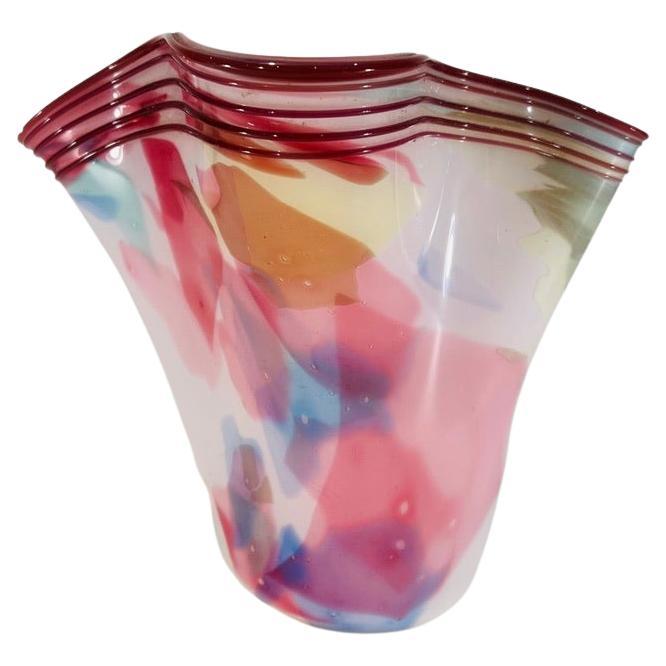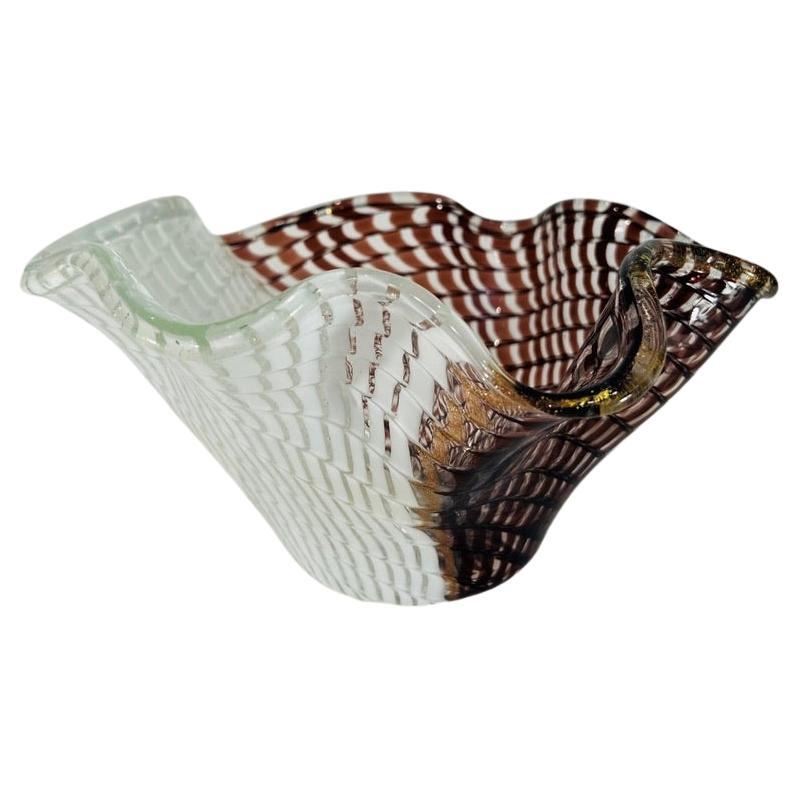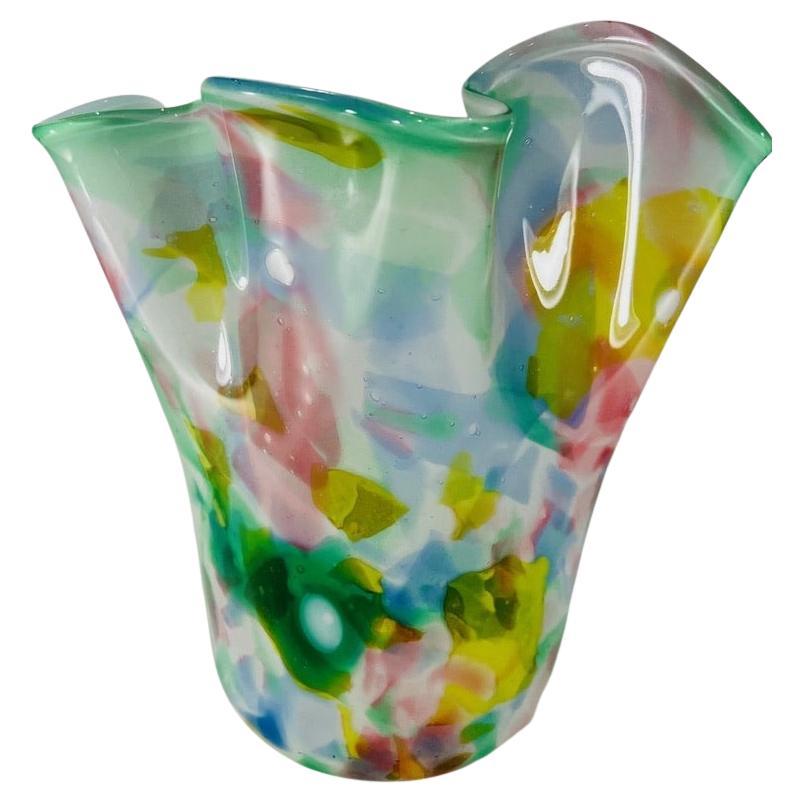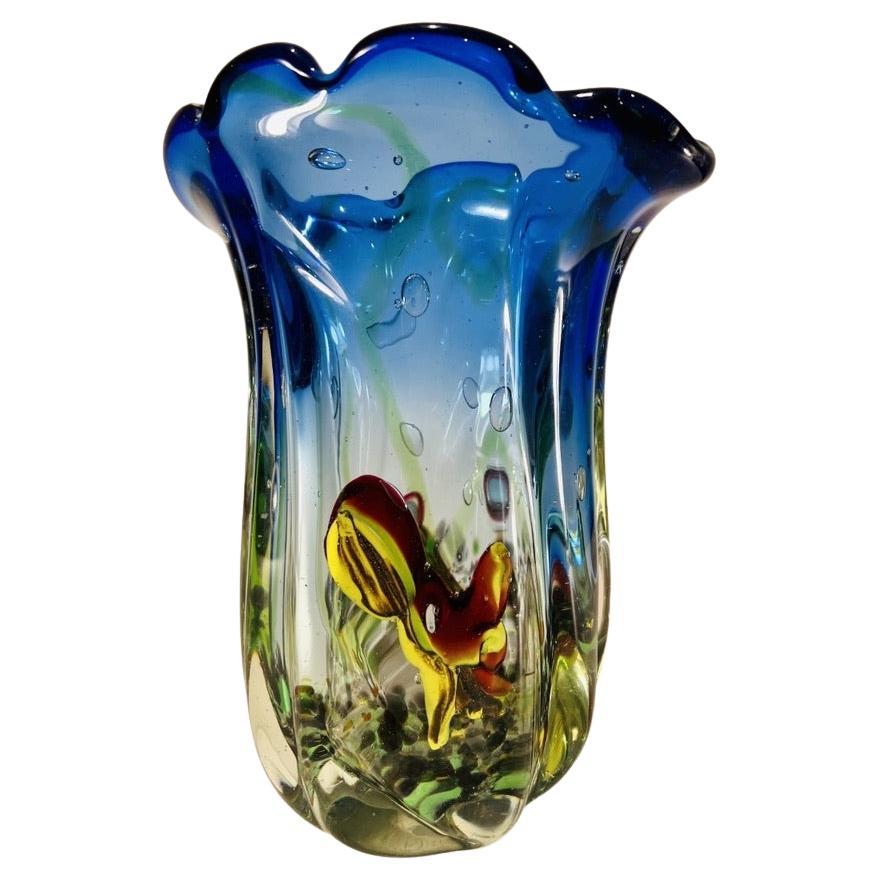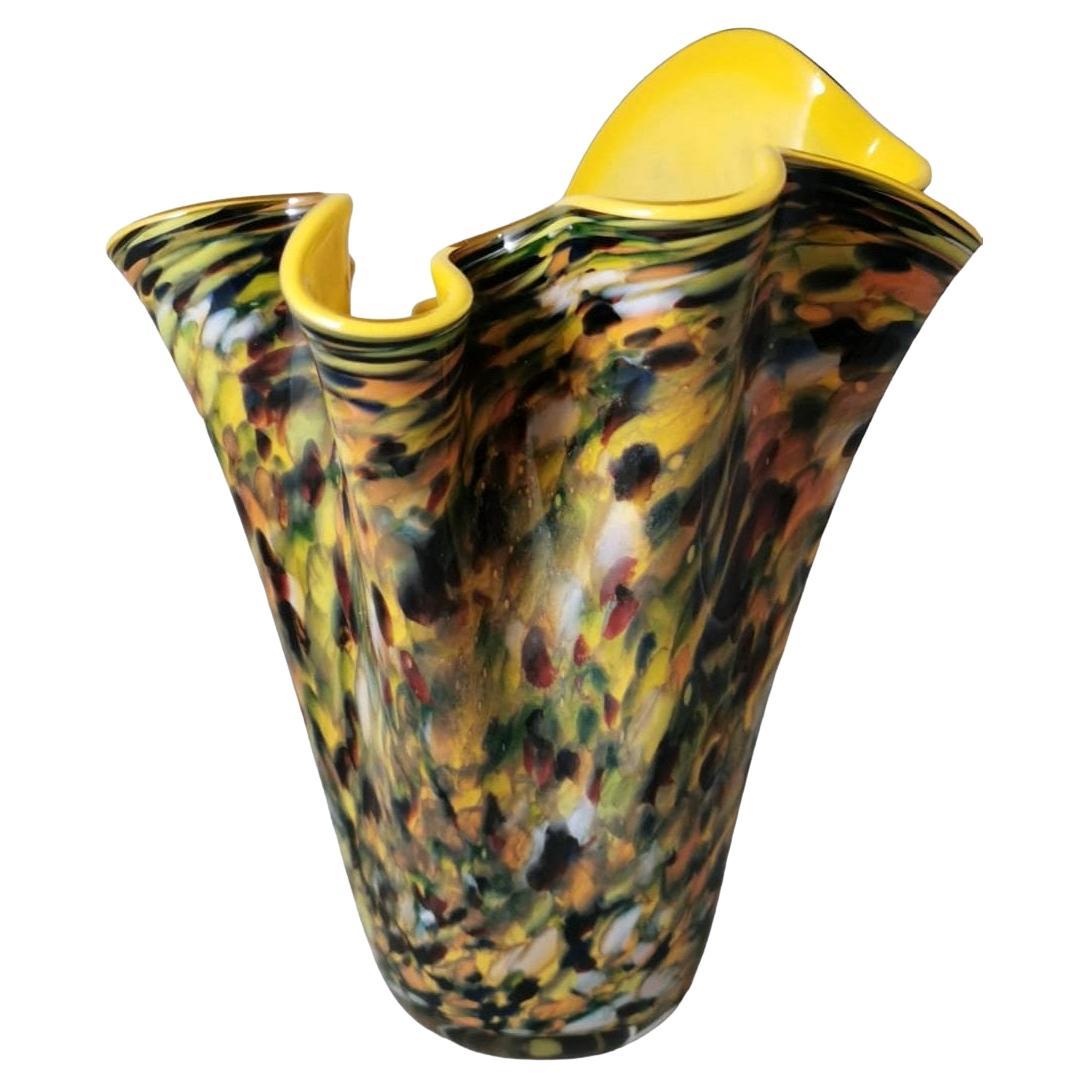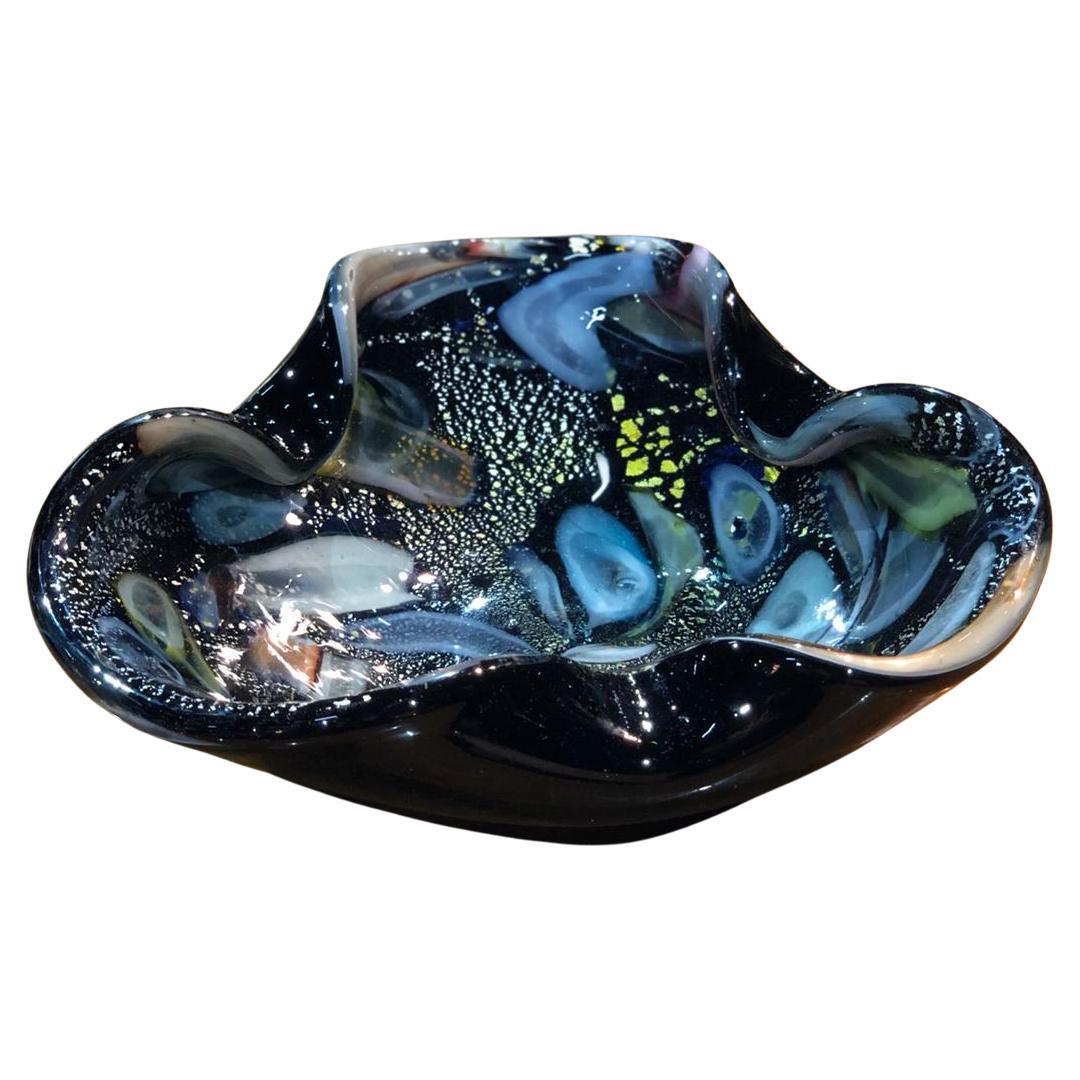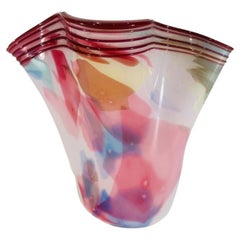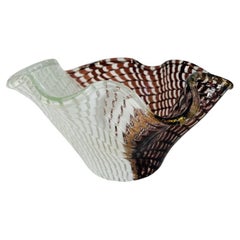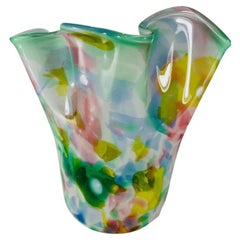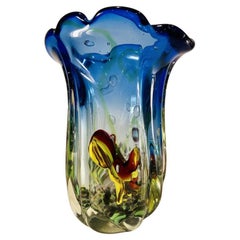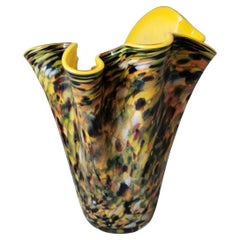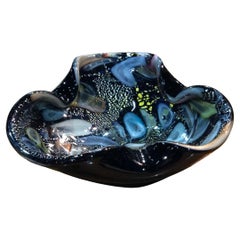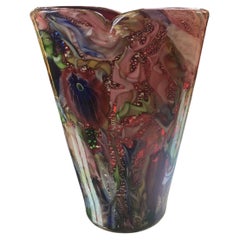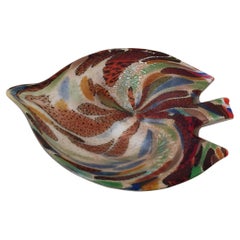Items Similar to Dino Martens Italian Multicolor 1950 Murano Glass "Fazzoletto"
Want more images or videos?
Request additional images or videos from the seller
1 of 8
Dino Martens Italian Multicolor 1950 Murano Glass "Fazzoletto"
$4,500
£3,397.99
€3,917.55
CA$6,351.41
A$7,001.22
CHF 3,663.37
MX$85,902.77
NOK 46,114.58
SEK 43,124.43
DKK 29,243.35
About the Item
Incredible multicolor vase with applied glass attributed to Dino Martens 1950 fazzoleto model.
- Similar to:Dino Martens (Artist)
- Style:International Style (Of the Period)
- Materials and Techniques:Murano Glass,Other
- Place of Origin:
- Period:
- Date of Manufacture:1950
- Condition:perfect Conditions.
- Seller Location:Rio De Janeiro, BR
- Reference Number:1stDibs: LU8821235510612
About the Seller
5.0
Vetted Professional Seller
Every seller passes strict standards for authenticity and reliability
Established in 1981
1stDibs seller since 2023
9 sales on 1stDibs
Typical response time: 6 hours
- ShippingRetrieving quote...Shipping from: Rio De Janeiro, Brazil
- Return Policy
Authenticity Guarantee
In the unlikely event there’s an issue with an item’s authenticity, contact us within 1 year for a full refund. DetailsMoney-Back Guarantee
If your item is not as described, is damaged in transit, or does not arrive, contact us within 7 days for a full refund. Details24-Hour Cancellation
You have a 24-hour grace period in which to reconsider your purchase, with no questions asked.Vetted Professional Sellers
Our world-class sellers must adhere to strict standards for service and quality, maintaining the integrity of our listings.Price-Match Guarantee
If you find that a seller listed the same item for a lower price elsewhere, we’ll match it.Trusted Global Delivery
Our best-in-class carrier network provides specialized shipping options worldwide, including custom delivery.More From This Seller
View AllDino Martens Italian Multicolor 1950 Murano Glass "Fazzoletto"
By Dino Martens
Located in Rio De Janeiro, RJ
Incredible Dino Martens italian Murano glass multicolor circa 1950 "fazzoletto" vase with applied glass.
Category
Vintage 1950s Italian International Style Vases
Materials
Murano Glass
Dino Martens Italian Multicolor 1950 Murano Glass Center Piece
By Dino Martens
Located in Rio De Janeiro, RJ
Incredible center piece in Murano glass by Dino Martens circa 1950 fazzoletto model with applied glass and venturina. Fantastic.
Category
Vintage 1950s Italian International Style Glass
Materials
Murano Glass
Dino Martens Murano glass multicolor circa 1950 "Fazzoletto" vase.
By Dino Martens
Located in Rio De Janeiro, RJ
Incredible Dino Martens Murano glass multicolor circa 1950 "Fazzoletto" vase.
Category
Vintage 1950s Italian International Style Vases
Materials
Murano Glass
Dino Martens par Aureliano Toso Murano glass circa 1950
By Dino Martens
Located in Rio De Janeiro, RJ
incredible Murano vase from the fifths attributed to Dino Martens to Aureliano Toso
Category
Vintage 1950s Italian International Style Glass
Materials
Murano Glass
AVeM Murano glass multicolor center piece circa 1950 "Bizantino"
By Arte Vetraria Muranese (AVEM)
Located in Rio De Janeiro, RJ
Incredible AVeM Murano glass center piece "bizantino" multicolor circa 1950.
Category
Vintage 1950s Italian Mid-Century Modern Centerpieces
Materials
Murano Glass
Large Fratelli Toso attributed Murano Glass multicolor circa 1950
By Fratelli Toso
Located in Rio De Janeiro, RJ
Incredible center piece in Murano glass applied attributed to Fratelli Toso circa 1950 with bubbles inside glass.
Category
Vintage 1950s Centerpieces
Materials
Murano Glass
You May Also Like
Murano Glass Multicolored Vase Mod. "Fazzoletto" Venini Style
By Fulvio Bianconi & Paolo Venini
Located in Prato, Tuscany
We kindly suggest that you read the whole description, as with it we try to give you detailed technical and historical information to guarantee the authenticity of our objects.
Iconic and original yellow opaline Murano glass vase; the vase was blown in one piece without joints; the most difficult and special operation was to leave the yellow opaline inside and make the outside with multiple colors; various colored oxides were applied when the draft of the yellow opaline vase...
Category
Late 20th Century Italian Mid-Century Modern Vases
Materials
Murano Glass
Murano 1930, Italian, Technical Avventurina
Located in Ciudad Autónoma Buenos Aires, C
Murano.
With silver applications.
We have specialized in the sale of Art Deco and Art Nouveau and Vintage styles since 1982. If you have any questions we are at your disposal.
Pushing the button that reads 'View All From Seller'. And you can see more objects to the style for sale.
Technical Avventurina :
Avventurina is a Murano glass-making technique developed on Murano island in the 17th century. I was first mentioned in a document dating from 1614 as "a kind of stone with gilt stars inside", at which point it already mesmerized people with the unusual and attractive look. The technique owes its name to the fact that its discovery happened by chance thanks to a lucky coincidence, when a glass artisan is said to have accidentally dropped some metal shavings into the glass mixture. Italians say it happened "all'avventura", which in Italian means "by chance".
The first documented recipe for the technique dates from 1644, when Murano master glassmaker Giovanni Darduin described how Avventurina glass should be created. The recipe involves adding various metal oxides such as copper and iron to the hot glass mixture, which will cause tiny particles of the metals to crystallize as the glass mixture cools off.
Complicating the process, for such crystallization to occur the furnace had to get fully extinguished, and the metal particles would slowly separate from the glass base over a few days during the natural cooling of the glass. This was a very difficult process from a logistical perspective, since every time a glass furnace got extinguished it caused work to be paused, and re-igniting it was quite a big process, as it took time to fully heat it to the desired temperature.
As industrial revolution set foot on Murano in the nineteenth century, the process got a remake. Large volumes of fine Avventurina paste were made and then skillfully stretched into glass canes, which were then re-melted for jewelry-making under a small flame, or for glass blowing. This Avventurina paste received worldwide acclaim and re-ignited the fame of Murano Glass workshops due to its use in Salviati mosaics...
Category
Vintage 1930s Italian Art Deco Centerpieces
Materials
Silver, Gold
Aureliano Toso #Dino Martens# Vase Murano Glass 1950 Italy
By Aureliano Toso
Located in Milano, IT
Vase Aureliano Toso
Category
Vintage 1950s Other Glass
Materials
Glass
Murano, 1930, Italian, Attributed to Fratelli Toso Technical Avventurina
By Fratelli Toso
Located in Ciudad Autónoma Buenos Aires, C
Murano
Technical Avventurina :
We have specialized in the sale of Art Deco and Art Nouveau and Vintage styles since 1982. If you have any questions we are at your disposal.
Pushing the button that reads 'View All From Seller'. And you can see more objects to the style for sale.
Fratelli Toso, Venice
One of the oldest glass factories established in Murano, Fratelli Toso was founded in 1854 by six brothers who loved the art of glassmaking. With over 150 years of experience in the field, the Toso family improved their techniques and nowadays are one of the top award-winning manufacturers of Murano glass.
Technical Avventurina :
Avventurina is a Murano glass-making technique developed on Murano island in the 17th century. I was first mentioned in a document dating from 1614 as "a kind of stone with gilt stars inside", at which point it already mesmerized people with the unusual and attractive look. The technique owes its name to the fact that its discovery happened by chance thanks to a lucky coincidence, when a glass artisan is said to have accidentally dropped some metal shavings into the glass mixture. Italians say it happened "all'avventura", which in Italian means "by chance".
The first documented recipe for the technique dates from 1644, when Murano master glassmaker Giovanni Darduin described how Avventurina glass should be created. The recipe involves adding various metal oxides such as copper and iron to the hot glass mixture, which will cause tiny particles of the metals to crystallize as the glass mixture cools off.
Complicating the process, for such crystallization to occur the furnace had to get fully extinguished, and the metal particles would slowly separate from the glass base over a few days during the natural cooling of the glass. This was a very difficult process from a logistical perspective, since every time a glass furnace got extinguished it caused work to be paused, and re-igniting it was quite a big process, as it took time to fully heat it to the desired temperature.
As industrial revolution set foot on Murano in the nineteenth century, the process got a remake. Large volumes of fine Avventurina paste were made and then skillfully stretched into glass canes, which were then re-melted for jewelry-making under a small flame, or for glass blowing. This Avventurina paste received worldwide acclaim and re-ignited the fame of Murano Glass workshops due to its use in Salviati mosaics...
Category
Vintage 1930s Italian Art Deco Centerpieces
Materials
Murano Glass
Murano Glass Centerpiece Italian 1940
Located in Ciudad Autónoma Buenos Aires, AR
Murano Glass Centerpiece Italian 1940
Category
Mid-20th Century Italian Art Deco Decorative Bowls
Materials
Art Glass
$1,160 Sale Price
20% Off
Murano, 1930, Italian, Attributed to Fratelli Toso, Technical Avventurina
By Fratelli Toso
Located in Ciudad Autónoma Buenos Aires, C
Murano
Technical Avventurina :
We have specialized in the sale of Art Deco and Art Nouveau and Vintage styles since 1982. If you have any questions we are at your disposal.
Fratelli Toso, Venice
One of the oldest glass factories established in Murano, Fratelli Toso was founded in 1854 by six brothers who loved the art of glassmaking. With over 150 years of experience in the field, the Toso family improved their techniques and nowadays are one of the top award-winning manufacturers of Murano glass.
Technical Avventurina :
Avventurina is a Murano glass-making technique developed on Murano island in the 17th century. I was first mentioned in a document dating from 1614 as "a kind of stone with gilt stars inside", at which point it already mesmerized people with the unusual and attractive look. The technique owes its name to the fact that its discovery happened by chance thanks to a lucky coincidence, when a glass artisan is said to have accidentally dropped some metal shavings into the glass mixture. Italians say it happened "all'avventura", which in Italian means "by chance".
The first documented recipe for the technique dates from 1644, when Murano master glassmaker Giovanni Darduin described how Avventurina glass should be created. The recipe involves adding various metal oxides such as copper and iron to the hot glass mixture, which will cause tiny particles of the metals to crystallize as the glass mixture cools off.
Complicating the process, for such crystallization to occur the furnace had to get fully extinguished, and the metal particles would slowly separate from the glass base over a few days during the natural cooling of the glass. This was a very difficult process from a logistical perspective, since every time a glass furnace got extinguished it caused work to be paused, and re-igniting it was quite a big process, as it took time to fully heat it to the desired temperature.
As industrial revolution set foot on Murano in the nineteenth century, the process got a remake. Large volumes of fine Avventurina paste were made and then skillfully stretched into glass canes, which were then re-melted for jewelry-making under a small flame, or for glass blowing. This Avventurina paste received worldwide acclaim and re-ignited the fame of Murano Glass workshops due to its use in Salviati mosaics...
Category
Vintage 1930s Italian Art Deco Centerpieces
Materials
Murano Glass
More Ways To Browse
Vintage Clear Glass Drinking Glasses
Vintage Port Wine Glasses
Amber Glass Bowls
Antique Masonic Glass
Antique Roemer Glass
Blenko Glass By Myers
Blue Crystal Wine Glasses
Bohemia Crystal On Sale
Cranberry Glass Goblets
Cranberry Overlay Bohemian Glass
Decanter With Ball Stopper
Fostoria Century
Opaline Portieux Vallerysthal
Orrefors Fuga
Rare Blenko
Ruby Flash Glass
Seguso Decanter
Stevens Williams Cut Glass
